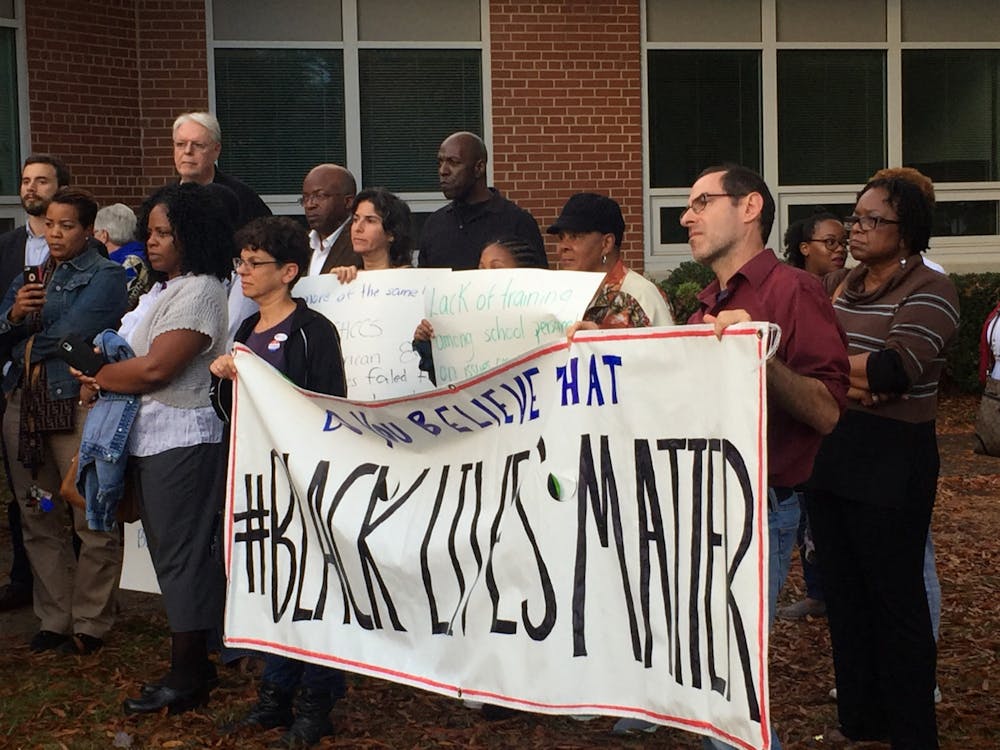“We think the problem is with the system,” Hunter said. “What we have is more of an opportunity gap, an access gap. The achievement gap is really the outputs of the system. The opportunity gap is the inputs of the system. We need to focus more on inputs as well as address the outputs.”
Dianne Jackson, a member of the Chapel Hill-Carrboro NAACP and a former librarian for the district, said she witnessed the impact of this opportunity gap on students firsthand. She said the gap presented itself in the sorting of students into academically gifted programs, the disqualification of students from extracurriculars due to a lack of transportation and a shortage of teachers of color in the district.
“If you go into some classes, you can predict what class it is based on how many kids of color are in or absent from those classes,” Jackson said. “Can you imagine the message that sends, to see that class as a student? That class that is without anybody in it that looks like you. Imagine the impact, how young minds would internalize that.”
Lenore Hango, a UNC senior who was in the district for grades K-12, emphasized the importance of these opportunities to students, including representation among teachers.
“It’s very hard to put a value on what having a teacher who looks like you does for a student,” Hango said.
She also said she has observed a trend in academically gifted programs in elementary school leading to segregation amongst students taking AP and honors classes in high school, in addition to an increased number of suspensions for Black and Hispanic students.
In N.C. School Report Card’s 2018-19 district profile for CHCCS, 5 percent of Black students were reported to take AP classes in the district, compared to about 63 percent of white students. About 8 percent of Hispanic students took AP classes. Out of a 1000 student subgroup, Black students received 136.46 in-school-suspensions and Hispanic students received 66.67, compared to 21.75 for white students.
Jackson, who worked in the district for over 30 years, said it is disheartening to see these same issues persist years later.
“For this community, the seat of liberalism, the first public university, it’s a stain on the community,” she said. “It’s an embarrassment.”
But some schools and teachers in the district are attempting to lessen the impact of this gap on their students of color.
Matt Cone, a teacher at Carrboro High School, said the high school has made several steps toward increasing opportunities for students. These steps included putting honors and non-honors students in the same English and Social Studies classes for 9th and 10th grade and holding a two-day summer session about getting ready for AP classes.
“A lot of students have been socialized to (take AP classes),” Cone said. “It wasn’t second nature for them at one point, and someone taught them how to do it. Can we teach everyone to do school in an AP way? Can we try to level the playing field?”
The district is also making steps toward improvement. The district released a three-year strategic plan for 2018-2021 that focuses on student success, employee experience, family and community engagement and organizational effectiveness.
To get the day's news and headlines in your inbox each morning, sign up for our email newsletters.
Nash said most districts have longer plans, and CHCCS will be in the process of gathering more data for the community next year.
In addition, CHCCS has an equity plan, called Equity Equals Excellence, developed by the CHCCS Equity Task Force. The plan has three focus areas of culture, curriculum and instruction. It includes the use of a Racial Equity Impact Assessment tool that examines how racial and ethnic groups are affected by the actions and decisions of the district.
However, many still believe the district has a long way to go when it comes to equity in schools.
“We’re fixing fishes,” Jackson said. “We need to fix the lake.”
@sonjarao
city@dailytarheel.com



